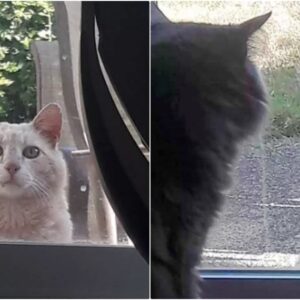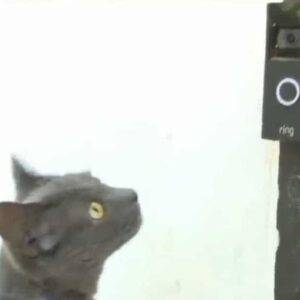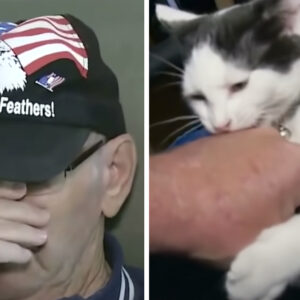One quiet evening in Thailand, as a family sat outside their home enjoying the warm air, they noticed a small kitten wandering alone on the street. At first glance, the tiny creature seemed like a lost stray, but something about its appearance struck them as odd—it didn’t look like any ordinary neighborhood cat they’d seen before. Concerned for the kitten’s safety and curious about its origins, the family decided to reach out to The Wildlife Friends Foundation Thailand (WFFT), a local animal rescue organization, to help identify the mysterious little animal and ensure it received the proper care.

Upon closer inspection, the specialists at WFFT made a startling discovery: this wasn’t an ordinary kitten. The little one was actually a fishing cat, a rare species teetering on the edge of extinction. These wild cats, known for their love of aquatic prey, can grow to twice the size of a typical domestic cat. Their name comes from their preference for hunting fish and thriving near water sources.
WFFT staff were surprised to find that the kitten, later named Simba, had likely been born just hours before the family found him. What puzzled them most was the absence of his mother—an unusual occurrence since fishing cat mothers rarely abandon their young. Hoping she might return, the family agreed to foster Simba temporarily, monitoring the area for any signs of his mother. But days passed, and no mother ever showed up.

In the meantime, the family became deeply attached to Simba, and he to them. As they fed him milk and cared for him around the clock, the tiny fishing cat began to thrive under their care. Watching him grow into a healthy, vibrant young cat was a heartwarming experience. However, WFFT emphasized how critical it was for Simba to continue thriving—not just for himself but for the survival of his entire species.
“Poaching and retribution killing are the primary reasons for an 84% decline in Thailand’s fishing cat population,” WFFT explained, underscoring the urgency of protecting Simba and other cats like him. His survival represents a small but significant step toward preserving the species.

Fishing cats, listed as Vulnerable on the International Union for Conservation of Nature’s Red List since 2016, live in wetland habitats such as rivers, lakes, swamps, and mangroves. The destruction of these ecosystems has decimated their population across South and Southeast Asia, making every surviving individual—like Simba—a beacon of hope for the species.
A Vulnerable Person Killed an Innocent Cat. What Does Justice Look Like?
Thanks to the kindness of one family and the efforts of WFFT, Simba’s story is not just about survival—it’s a reminder of the importance of protecting wildlife. This rare cat has defied the odds, and with the right care, he may help secure a brighter future for his endangered kind.
Please ‘SHARE’ to pass on this story to a friend or family member
Click ‘SHARE’ below to pass this along to a friend or family member






